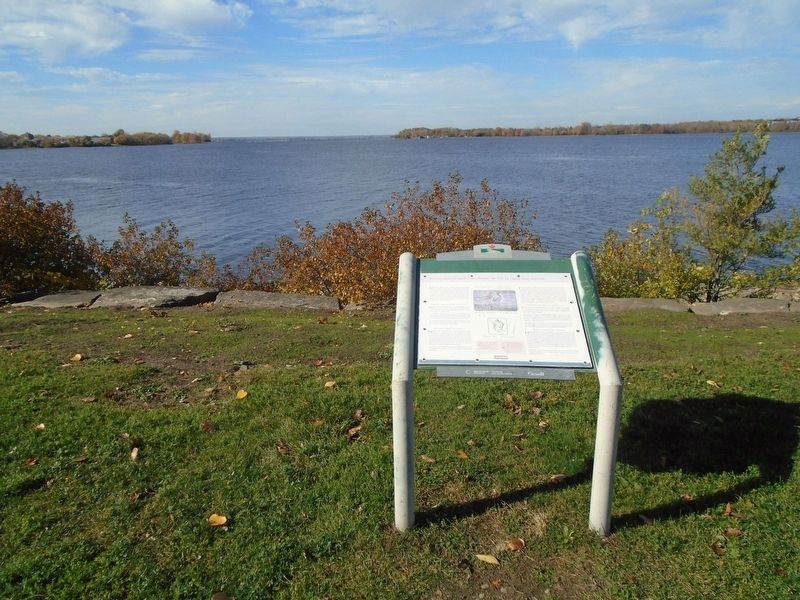Woodroffe - Lincoln Heights in Ottawa, Ontario — Central Canada (North America)
Without Habitat, There Is No Wildlife / Pas de faune sans habitat!
Inscription.
A species needs a habitat to survive. Expanding human presence changes habitats for wild species. Canada geese, for example, thrive in large expanses of agricultural land and short-grass parklands. Controlling their numbers may involve something as simple as letting the grass grow high. Most species, however, do not fare well in the altered landscape. By the early 1900s, the wood duck population had plummeted due to habitat destruction and overhunting. The Migratory Birds Convention prevented its complete disappearance, but the natural tree cavities it needed for nesting had become scarce. An artificial nest box program helped rebuild its population. Dead trees or snags are crucial for all kinds of cavity nesters—including the wood duck.
The First Canadian Wildlife
Habitat Conservation Stamp — 1985
[Balance of marker text is non-historical information and not transcribed]
————————————————
Le premier timbre sur la
conservation des habitats
fauniques du Canada, 1985
[Le reste du texte du marqueur est une information non historique et non transcrite]
Erected by National Capital Commission / Commission de la capitale nationale.
Topics. This historical marker is listed in these topic lists: Animals • Environment. A significant historical year for this entry is 1985.
Location. 45°
22.753′ N, 75° 46.797′ W. Marker is in Ottawa, Ontario. It is in Woodroffe - Lincoln Heights. Marker is at the Deschênes Rapids park along the Sir John A. Macdonald Parkway. Touch for map. Marker is in this post office area: Ottawa ON K2B 5L7, Canada. Touch for directions.
Other nearby markers. At least 8 other markers are within 5 kilometers of this marker, measured as the crow flies. Maplelawn Oak Trees (approx. 1.7 kilometers away); Maplelawn (approx. 1.7 kilometers away); a different marker also named Maplelawn (approx. 1.7 kilometers away); Westboro War Memorial (approx. 1.9 kilometers away); Memorial Heights War Memorial (approx. 2.3 kilometers away); Nepean Town Hall / Mairie de Nepean (approx. 2.5 kilometers away); War Memorial (approx. 4 kilometers away); Home Children / Les Petits Émigrés (approx. 4.8 kilometers away). Touch for a list and map of all markers in Ottawa.
More about this marker. The other markers at the Deschênes Rapids park are not historical, primarily providing information on migratory waterfowl.
Also see . . .
1. Birds protected under the Migratory Birds Convention Act (Govt of Canada). (Submitted on October 21, 2019, by William Fischer, Jr. of Scranton, Pennsylvania.)
2. Migratory Bird Treaty Act (US Fish and Wildlife Service). (Submitted on October 21, 2019, by William Fischer, Jr. of Scranton, Pennsylvania.)
Credits. This page was last revised on September 5, 2022. It was originally submitted on October 21, 2019, by William Fischer, Jr. of Scranton, Pennsylvania. This page has been viewed 133 times since then and 11 times this year. Last updated on September 4, 2022, by Robert Rusaw of Massena, New York. Photos: 1, 2. submitted on October 21, 2019, by William Fischer, Jr. of Scranton, Pennsylvania. • Andrew Ruppenstein was the editor who published this page.

